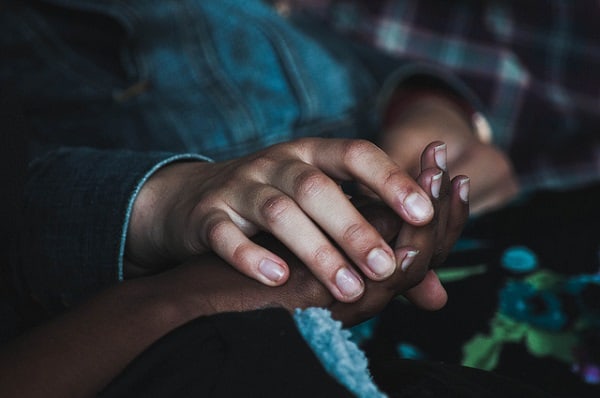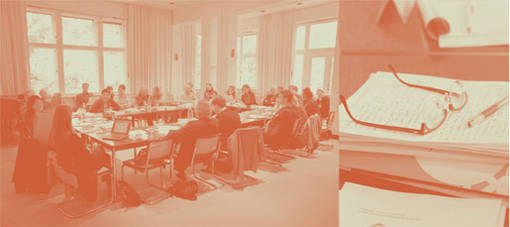Three years ago, after being sexually assaulted while conducting dissertation research in Iceland, I joined others in insisting that our discipline take more seriously the prevalence of sexual violence in the field (see: Backe 2017, Huang 2017). As I learned in writing about my experience, sexual violence happens often, its impacts are immeasurable, and our institutions are woefully unprepared to address its aftermath. In raising this issue, I have had the immense privilege of being encouraged.
The vast majority of anthropologists I’ve spoken to have told me they believe me, agree with me, and they too feel that we need disciplinary conversations – even structures and policies – specifically addressing fieldwork sexual assault. And still, in 2017, most of us don’t have them.
In her introduction to The New Ethnographer, Anya Evans asks, of gendered violence, “Why aren’t we talking about this?”. Since joining the conversation on anthropology and sexual violence, I have come to feel this question is a real and not rhetorical one. I see the challenges of already limited resources and slow-moving institutions, now under threat of being dismantled by the state. These are issues that cut across and beyond academia. But in this short piece I want to suggest that part of the problem – and its solution – is specific to anthropology. I believe that one source of our collective reluctance is the way sexual violence raises uncomfortable questions about the fact and practice of being in the field. Confronting rape will require, if not answering them, at least posing them openly and honestly to ourselves.
***
Anthropological fieldwork was once a masculine endeavor, framed in terms of adventure, survival, and the triumph of the “penetrating intellect” (Gupta and Ferguson 1997, Killick 1995). Arrival scenes, modeled after Malinowski’s, drove home the dangerous difference of the field site, and the legitimacy of the fieldworker who dared explore it. Such performances of masculinity were both specific to and enabled by, the colonial relations from which anthropological knowledge emerged. A key element of anthropology’s filling the “Savage slot,” then, was the impression of willfully taken risk (Trouillot 2003).
Queer, feminist, and “halfie” anthropologists, however, have since chipped away at this “prevailing machismo mystique” (Abu-Lughod 1991, Scheper-Hughes 1983). They have theorized and modeled other modes of engagement, more akin to actual, equitable relations, and more suited to ethnography as imagined today: intimacy, interdependence, vulnerability (Behar 1996, Visveswaran 1994, Weston 1991). Critically, these theorists took traits seen as inherent weaknesses, and re-imagined them as specific disciplinary tools. In doing so they not only addressed the growing diversity of the discipline, but also the inequalities encoded in fieldwork, itself.

This work has been hugely important and influential – it’s palpable in the anthropology into which I was trained. Though certainly the mode of the masculine explorer is still present in ethnographic writing and research, I was instead educated in the practice of openness, empathy, honesty, and rapport.
But in the ongoing diffusion of these critical interventions, I see an important difference: although our vulnerability is now valued, it is framed as selected and strategic – not as written on our bodies, regardless of our choice.
Chosen vulnerability works in this way as a compromise that settles questions of unequal difference in the field. It sanctions the idea that, with some significant effort, we can show up anywhere and take a respectful, rightful place. If we can open ourselves adequately, radically, we experience an impact that counterbalances the impact we make. Clearly, these are questions long asked and answered (for example: Trouillot 2003, Willis 1974), but they remain resolutely unresolved. While many continue to problematize the possibility that individual choices meaningfully offset structural inequalities in the field, on the whole anthropologists do not routinely question our very right to presence in places far from home.

When sexual violence happens, that question gets forced.
What do we do when a student is sexually assaulted during fieldwork? We ignore it. Or, we bring the student “home.” Or, we provide that student with the financial, medical, and legal resources they need to complete their research in the field. We encourage the student to press criminal charges. Or, we discourage the student from involving police.
Consider how each option makes its own statement. Questions of safety and justice quickly bleed into questions of rights and responsibilities. To what are we entitled, where, and from whom? What does it mean to assert that we have the right to safety? What would it mean to say that we don’t? Here I want to be extremely careful: I believe that sexual violence is categorically unacceptable. I believe survivors know best how to care for themselves, and deserve the resources to pursue safety as they choose. My point is that these choices aren’t merely logistical– they are statements about who the ethnographer is and should be, in relation to wherever it is that they are.
They break the peace of the pretense that we choose vulnerability – and that we all get to choose it the same. And when vulnerability is revealed as involuntary, the rest of our structuring assumptions come unstuck.
After all, what would it mean to have strong, shared responses to the incidence of sexual violence in the field? It would mean asserting that we have a right to be there – precisely wherever we choose to be. It would mean saying that we deserve the same treatment we expect (whether or not we receive it) at home. It would mean claiming the righteousness of voluntary vulnerability. These are not things we are sure of, nor should we be. These are vexing problems of power that cut to the heart of the anthropological enterprise.

And so, to reframe Spector’s question, why aren’t we talking about this? These are complex and unsettling questions about relating to distance and difference well. But grappling with such questions is, essentially, what anthropology today claims to do. We are not unfamiliar with the general principle and practice of struggling in the direction of a more just world.
Confronting rape during fieldwork brings into focus the ways that we are vulnerable, as well as the ways that we are not. If we fail to engage this issue directly, I worry that we’ll stay where we seem to be stuck: doing nothing, or subjecting students to responses that seem to harm more than they heal. If we don’t work through our own relationship to vulnerability, I worry that we will treat the concept without care. We see this in the responses to sexual violence most readily available in the U.S.A.: responses that turn on protection and punishment. Responses that reify the victimhood of the white woman (or in another variation, the oppression of the brown woman) and the criminality of the black or brown man. Responses that render sexual violence a “women’s issue,” and define womanhood in narrow, exclusive ways (for example, invisibilizing trans women, most at risk for violence of all). All are examples of vulnerability deliberately simplified and strategically deployed. All illustrate ways that vulnerability, unexamined, gets affixed to particular bodies, enrolling them in or excluding them from relations of care.
***
In Iceland, two days after I was assaulted, an Icelandic friend brought me to the police. As a mixed-race American with ten years of experience in political organizing around sexual violence, calling law enforcement was not my first thought. I had no reason to believe the state would not cause more violence, so I asked Icelandic women what they would do. The women I asked told me to report it – if not for my sake, then on their behalf. In doing so they were telling me that I was of and like them, that the legal system would work for them and should work for me.
When I gave my statement that day to the detective, still moving slow from the shock, he asked me about my assailant: “Was he Icelandic?” I told him I didn’t think so – I didn’t know. He held my gaze steadily, kindly, persistently. “He looked like me,” is what I said. The man reasoned with my ambiguous features, my dark curly hair and my summer-brown skin, and at that point my investigation shifted registers. At that moment I knew that I was believed. In a justice system significantly more likely to pursue rape cases against foreigners (though 71% of perpetrators are Icelandic), he too was telling me that I could be of and like them, provided that my assailant was not (Antonsdóttir 2014).
Asking for safety and justice is always a claim to belonging; arbitrating access to them is even more fraught and bold. No less is required when we ask ourselves and our institutions to confront the problem of sexual violence in the field. I believe this is a piece of why we’ve struggled with it so long. But we can draw upon our very own theory, principles, and practices, and choose an engagement with violence and vulnerability that puts something of ourselves at stake.
I am certain that we do not know all the answers, but as anthropologists, we should know what it means to really, truly ask.
References:
Abu-Lughod, Lila. 1991. Writing Against Culture in Recapturing Anthropology: Working in the Present, Richard G. Fox, ed. Santa Fe: School of American Research Press.
Antonsdóttir, Hildur Fjóla. 2014. Sexual Assault in Iceland: Rape and the Justice System. Edda Center, University of Iceland
Backe, Emma Louise. 2017. Feminist Anthropology Part II. The New Inquiry, January 19, 2017.
Behar, Ruth. 1996. The Vulnerable Observer: Anthropology that Breaks Your Heart. Boston: Beacon Press.
Gupta, Akhil and James Ferguson. 1997. Discipline and Practice: ‘The Field’ as Site, Method, and Location in Anthropology, in Anthropological Locations: Boundaries and Grounds of a Field Science, Akhil Gupta and James Ferguson, eds. Berkeley: University of California Press.
Huang, Mingwei. 2017. Vulnerable Observers: Notes on Fieldwork and Rape. The Chronicle of Higher Education, October 12, 2016.
Killick, Andrew. 1995. The penetrating intellect: on being white, straight, and male in Korea. In Taboo: Sex, Identity, and Erotic Subjectivity in Fieldwork. Ed. D. Kulick and M. Wilson. London: Routledge. Pp 76-106.
Scheper-Hughes, Nancy. 1983. Introduction: the problem of bias in androcentric and feminist anthropology. Women’s Studies 10(2): 109-116.
Trouillot, Michel-Rolph. 2003. Anthropology and the Savage Slot(ed.) Recapturing Anthropology: Working in the Present: 17-44. Santa Fe: School for American Research Press.
Visveswaran, Kamala. 1994. Fictions of Feminist Ethnography. Minneapolis: University of Minnesota Press.
Weston, Kath. 1991. Families We Choose: Lesbians, Gays, Kinship. New York: Columbia University Press.
Willis, William S. 1974. Skeletons in the Anthropological Closet in Reinventing Anthropology, Dell Hymes, ed. New York: Vintage.
Featured image by Tory (flickr, CC BY-SA 2.0).




